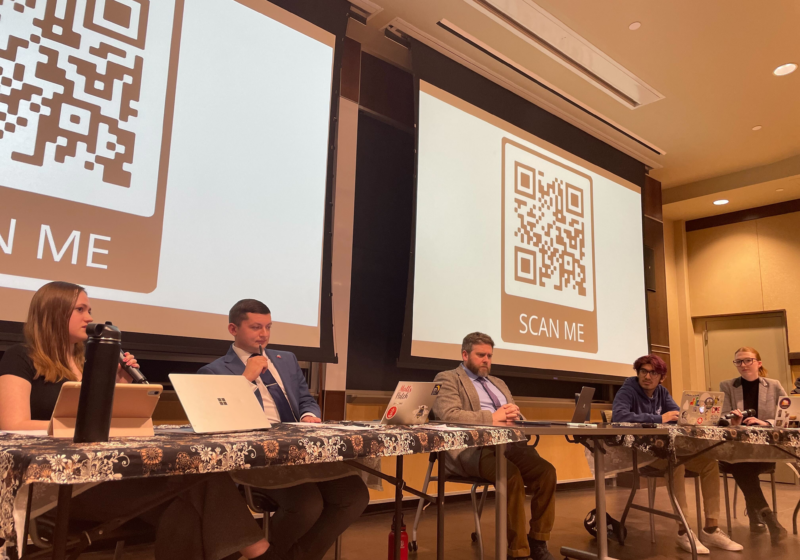I was strolling through the left’s Twittersphere last week — the memes are prime — when I saw a thread thrashing The New York Times for its recent story about the minority of Americans who oppose legal status for Dreamers and the revival of DACA.
Commenters called it another example of the paper buoying white supremacists and a disgraceful normalization of fringe ideas. Why not profile Dreamers or DACA recipients instead, several asked?
First things first: The Times has written deep pieces about Dreamers and DACA recipients and other undocumented immigrants at least 20 times in the last year alone, including a massive interactive project featuring the personal stories of over 120 young immigrants affected by the debate in D.C.
The bigger issue here is the idea that news outlets should shy away from writing about hidden or fringe people and ideologies, even those whose views we find vile.
It’s important for a newspaper to tell the stories of people who are overlooked or unheard, of people who dwell in society’s offbeat crevices or find themselves in strange, challenging, meaningful, or even criminal situations.
Of course that includes undocumented immigrants who may soon be — as some have already been — torn away from the only life they’ve known. It also includes people who have a chokehold on the national immigration debate through their influence on a party.
These stories have value. Coverage of a particular side on an issue isn’t an endorsement of it — it’s an examination of it. That kind of coverage could probably help temper liberal social media users who belittle rural white Americans just as much as it could inform those rural folks about the hardships faced by people outside their circles.
If we really want to find a way to stave off racism, or sexism, or any of these awful -isms, shouldn’t we know what drives people to adopt them? Is there no value in exploring the life of a mass shooter, in the hope that maybe we can understand why they killed? Reporting those stories does not preclude an outlet from also writing about the victims of those -isms and the innocent people slain by that shooter. They’re all part of the same package. On the surface, there’s a difference between “forgotten American” stories and Dylann Roof stories, but the principles behind them are the same.
What is a stronger journalistic critique of the Times, and some other national media right now, is how it handles White House coverage. (This will probably upset my pals in the left Twittersphere.)
Much of the Times’ reporting on President Trump and his administration is dogged, detailed accountability journalism. But too often, someone injects needless opinion into these pieces. Equally concerning is how some of these blockbuster reports rely on anonymous, second-hand sources. Here are a few recent examples.
In reporting that Trump had called Haiti and African nations “shitholes” and wondered why America should accept immigrants from those countries over immigrants from places like Norway, the Times called it “the latest example of his penchant for racially tinged remarks denigrating immigrants.”
Even though many — including myself — believe those remarks did happen (it’s disputed), and that they were rooted in race (also disputed), the Times shouldn’t have suggested so in its news coverage. There is no way journalists can make that kind of factual claim. We’re not in his head.
Reporters should provide people the information they need to decide their own opinion. Plenty of people could have read a version of that story without that language and have come to the conclusion that there was a racial component to the remarks. Let things speak for themselves.
Another passage, from a different immigration story: “Trump entered office with an agenda of symbolic but incompletely thought-out goals, the product not of rigorous policy debate but of emotionally charged personal interactions and an instinct for tapping into the nativist views of white working-class Americans.”
That’s an astute analysis of one way Trump landed in office. But it’s just that — an analysis. To his supporters, those goals probably weren’t just symbolic. That we can argue this means it shouldn’t have been written the way it was.
On to sourcing: When the Times reported last week that Trump had tried to fire Robert Mueller, the special counsel overseeing the Russia investigation, its reporters based their account on interviews with “four people told of the matter.”
I have faith that those reporters are convinced of the credibility of those sources. But is it too much to ask for a national news outlet to ground its reporting in something a bit better than interviews with people who were only told about something? How about people who knew first-hand?
Less than half of America trusts the mass media — only 32 percent did in 2016, a figure that rose to a still-low 41 percent in 2017, according to Gallup. Distrust for the media is particularly low among people our age — 62 percent of Americans aged 18 to 29 cannot name a news source that reports objectively, according to Gallup data released this month.
At a time like this, it’s crucial that news organizations are careful in their reportage, not only to avoid bias but also to avoid flimsy sourcing on big-name stories. If they’re not, those numbers could get worse. And with an administration so vocally pitting the public against the press, the media creating its own problems is the last thing we need.





